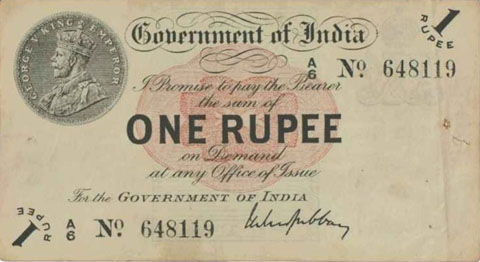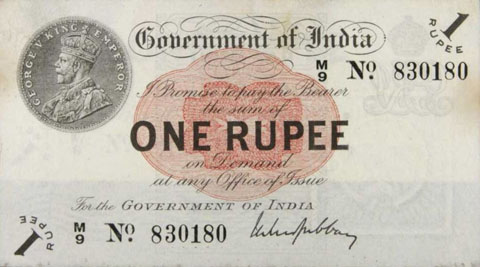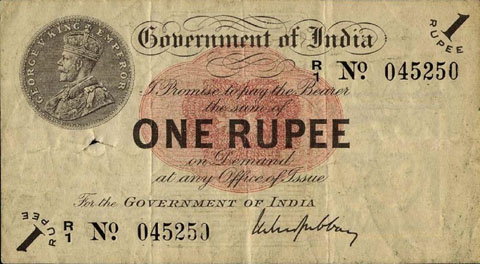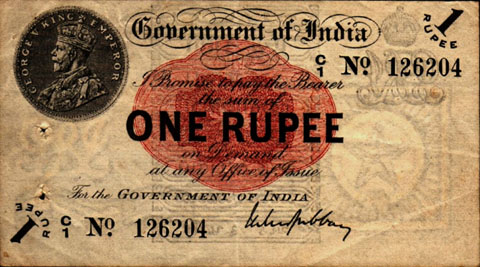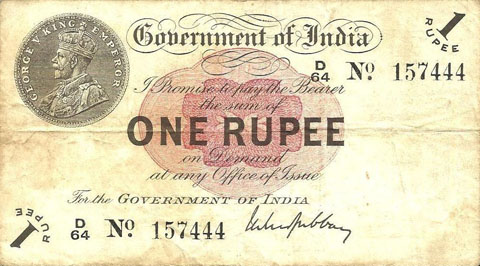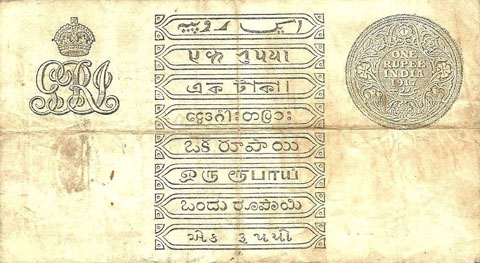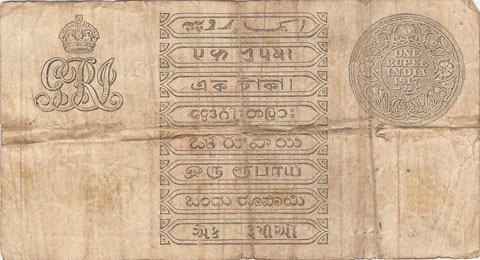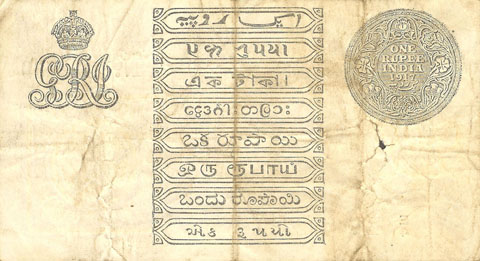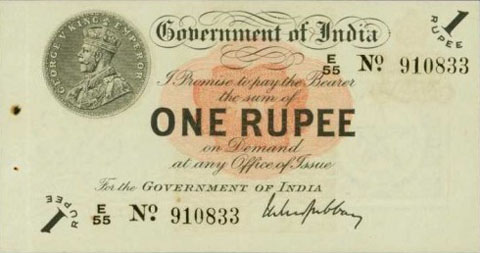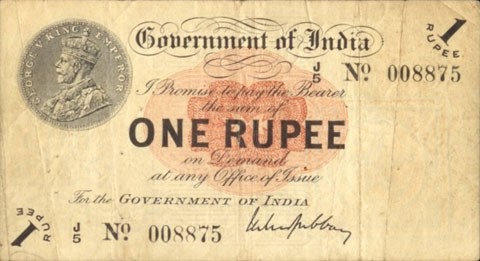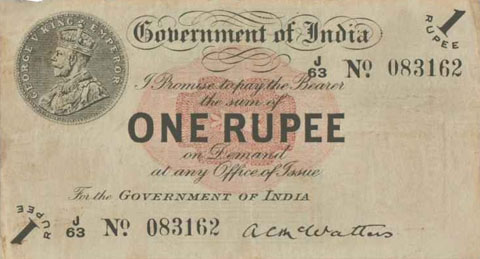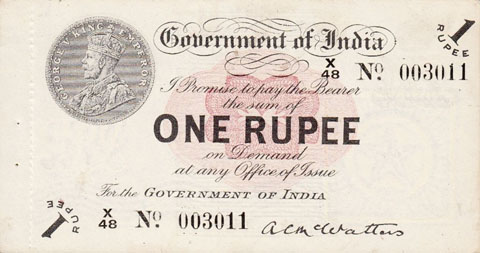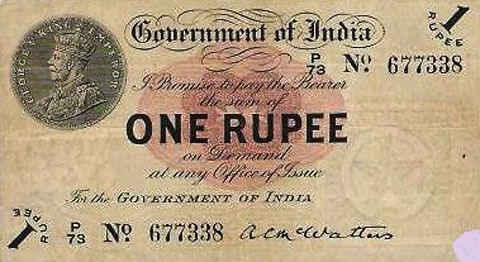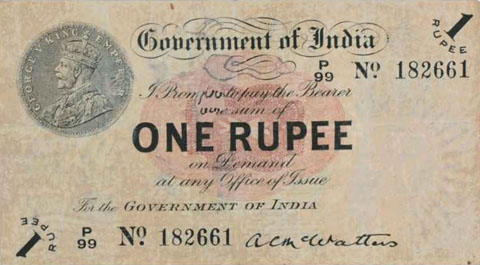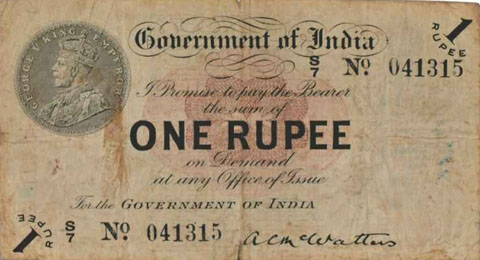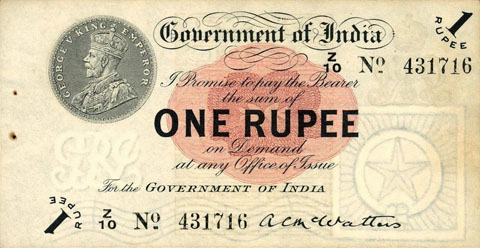Released in late 1917 the One Rupee note has an effigy of a One rupee Coin depicting King George V and the value written in words in the centre. The signature of the note (The person who was Controller of Currency at the time) was found in the lower part of the note just off centre to the right. The Serial Number is displayed in 2 places lower left and upper right. The value 1 and the word RUPEE is in the lower left corner and the upper right. In words reading from the top "Government of India I promise to pay the bearer the sum of ONE RUPEE on demand at any office of issue for the GOVERNMENT OF INDIA". The watermark could be viewed in the lower right hand corner there are 2 types an explanation is below. Serial numbers were actually branch issue indicators as explained below. (Until universalisation was implemented in late 1918).The back of the note has the reverse of the One Rupee coin dated 1917 the Royal cipher for King George V, and has eight language panels in the various languages used in India. Urdu, Devanagari, Bengali, Oriya, Telugu, Tamil, Kannada, and Gujarati; Interestingly the language panel for the language in Gujarati (position 8 at the bottom) was incorrect as the correct term was substituted with Rupaya not Rupayo and was not corrected until universalisation came into being.



